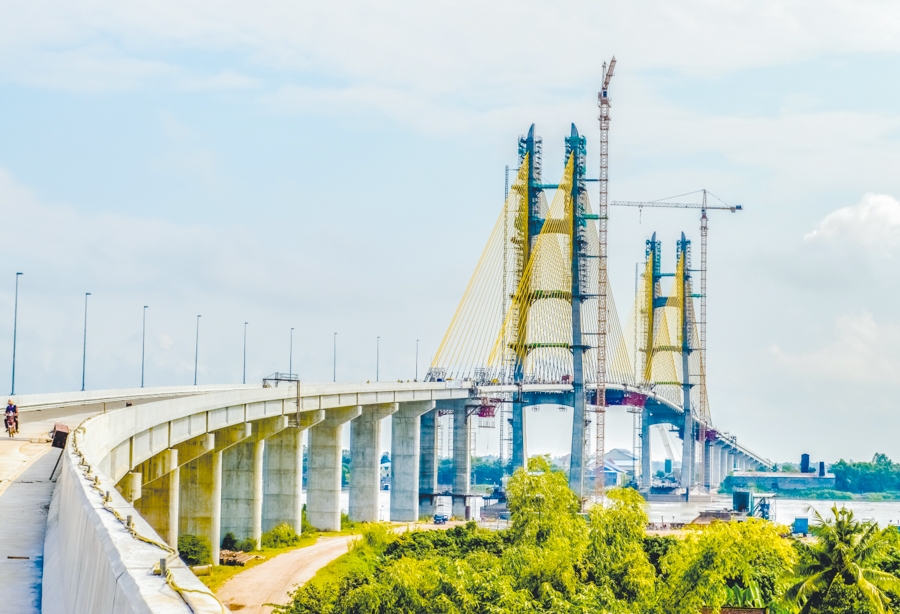Cambodia: Developing society and infrastructure
Dollarized economy constrains the government from funding development of infrastructure and society.
Two images on the back of the 500 riel banknote depict bridges, with the one on the left showing the Kingdom’s longest and most modern bridge, the Tsubasa (“Bird’s Wing”) Bridge linking Kandal and Prey Veng provinces.
The bridge was built with $127 million in grants from the Japanese government and is part of a highway that will connect Hoh Chi Minh City with Bangkok via Phnom Penh and Poipet. It is one of many examples of improvements in infrastructure that are enhancing the connectivity, which is critical for the sustainability of Cambodia’s economic growth. However, after two decades of average annual growth of 7.6 percent, development grants and concessional loans from foreign governments and development banks will eventually decline.
The World Bank last year reclassified Cambodia’s economy, moving it up from least developed to lower middle-income status. This achievement, however, raises a question: How will the government continue to pay for new infrastructure, given its eligibility for concessional loans and grants is diminishing?
The question is made more complex by the fact that the Kingdom’s economy remains heavily dollarized. This limits the government’s fiscal policy options. With so much foreign currency circulating in the economy, it is difficult for the government to do what most governments can: issue bonds in the national currency to finance infrastructure development, explains Mr. Ly Sideth, Director of the Exchange Management Department at the National Bank of Cambodia.
He believes that developing a robust riel-driven bond market is the key to further infrastructure development. Moreover, once the government is able to raise capital from the public to finance much needed development projects – such as roads, schools and hospitals – it can also reduce the dependence on foreign debts.
Mr. Ly believes that issuing riel-denominated securities would generate a wealth of positive interest among many commercial banks in the country. “Banks have a lot of liquidity and they need somewhere secured to park that. As long as the interest rate is competitive there will be an [attraction],” he explains.
Riel bonds also present the opportunity of alternative funding for an array of businesses and corporations by creating an avenue to borrow directly from the public. While a lack of trust in the local currency may fuel hesitation about the value of potential riel-denominated securities, Mr. Ly notes that “the government still remains the most stable institution in the country.”
He also points to another difficulty caused by the dollarization of Cambodia’s economy. It has created a currency mismatch that prevents the government from managing its budget at an optimal level, he says. While the government collects revenue in riel, spending by its ministries and agencies is overwhelmingly in US dollars, Mr. Ly explains.
“If the dollar and the riel move against each other in different directions then this presents a mismatch. The question becomes [about] what you’re getting versus what you’re growing.”
Greater use of the riel would create a bridge allowing Cambodia to move to a higher level of development.
Source: http://www.khmertimeskh.com/news/36412/developing-society–and-infrastructure/


 Thailand
Thailand




